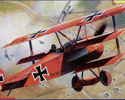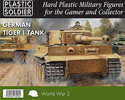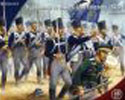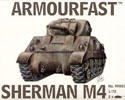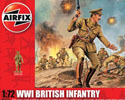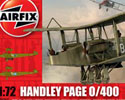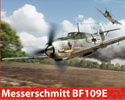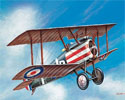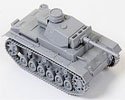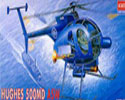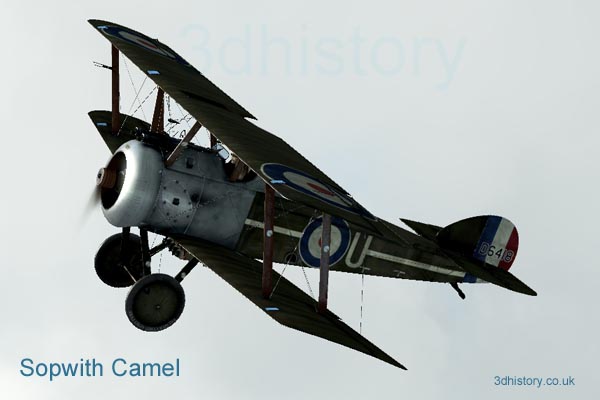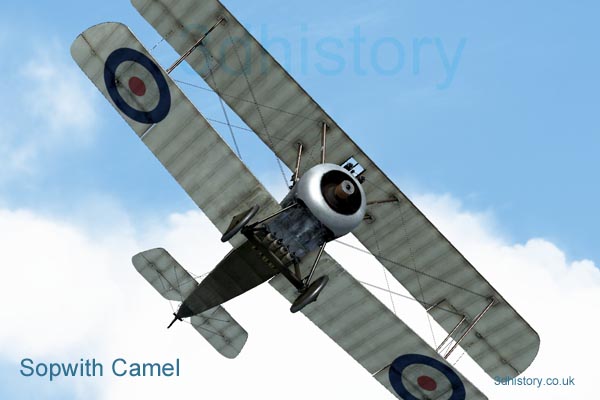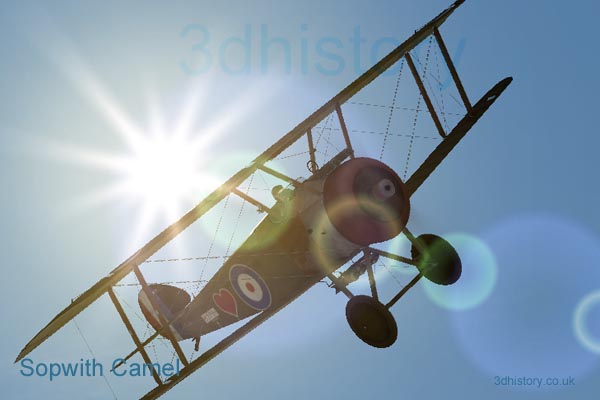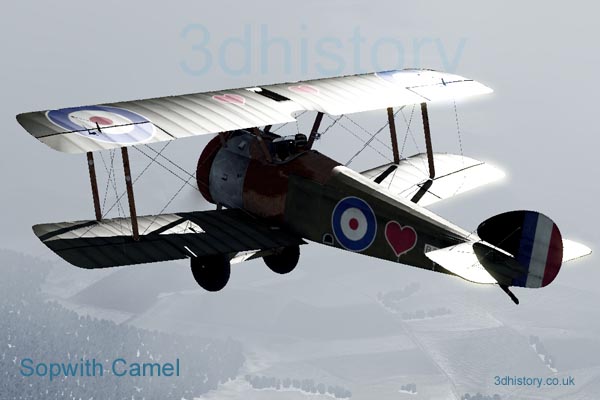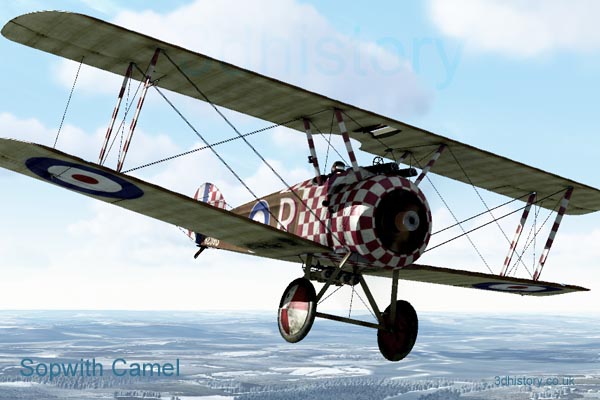The First World War - Sopwith Camel
Sopwith Camel
The Sopwith Camel was introduced late in World War One but, partly because it is credited with 1,294 victories, more than any other allied fighter, has since attained legendary status and become an icon of that war. When the Albatros I and II were introduced in mid September 1916 air superiority passed back to the Germans and resulted in the 'bloody April' of 1917 that witnessed significant losses to the allied air services, particularly the Royal Flying Corps. The Sopwith Triplane and Sopwith Pup were in service with the RFC and RNAS and could just about hold their own against the new fighters but it rapidly became obvious that a new fighter was needed for the future.
The Sopwith F1 Camel had a distinct hump above the forward fuselage and an accented dihedral on the lower wings. In the hands of an experienced pilot the Camel was a very dangerous prospect to meet in battle but to novice pilots the highly torqued rotary engine could prove to be lethal.
The Sopwith designer , Herbert Smith, decided to develop the Sopwith Pup by adding twin machine guns and uprating the engine. The result was a conventional wooden airframe covered with fabric and two wings, the top one straight and the lower one with a large dihedral, each wing having ailerons. The new type was given the designation Sopwith F1. Design and development began in late 1916 and deliveries were being made to front line units by May 1917. The new aircraft was quickly christened the Camel by aircrews because if its hump like feature above the guns in front of the pilot.
RNAS aircraft were first to fly operationally and two Gothas were claimed to have been shot down near Ostend in July 1917.
Pilots would find the Camel to be very different from the earlier Pup and Sopwith Triplane. The new Camel was ultra responsive to its controls because of the mass concentration at the front of the aircraft. The powerful rotary engine meant that a turn to the right was virtually instant and fast whereas a turn to the left was slow; many pilots preferred to turn left by executing a right hand turn 270 degrees. The Camel could quickly enter a spin without warning. This exceptional maneuverability would prove to be a winning feature, Camel pilots being able dictate the terms of the battle.
In August 1917 the Camel was employed in Home defense and by September 1917 the Camel was being used as a night fighter. To avoid the possibility of blinding the pilot and damaging the propeller by firing explosive ammunition through it the armament was changed from the front firing twin Vickers machine guns to a twin Lewis Guns mounted on the upper wing. To enable the pilot to change the ammunition drum on the Lewis' the cockpit was moved backwards. This modified Camel became known as the Sopwith Comic.
In early 1918 modifications were made to allow the Camel to be used in ground attack, particularly strafeing trenches. Two Lewis Guns were mounted n the cockpit in a downward firing position and armoured plating was applied underneath the fuselage to protect the pilot from small arms fire.
The Sopwith Camel continued in service until the end of the was and some were used by the newly formed Royal Air Force until 1920, when it was replaced by the Sopwith Snipe. During the First World War, as well as being used by British air services, the Sopwith Camel was used by the USA, Belgium the Netherlands, Greece and Russia.
| Crew: | 1 |
| Length: | 5.71 m (18 ft 9 in) |
| Height: | 2.59 m (8 ft 6 in) |
| Wingspan: | 8.53 m (28 ft 0 in) |
| Empty Weight: | 420kg (930 lb) |
| Loaded Weight: | 660 kg (1,455 lb) |
| Powerplant: | 1 x Clerget 9B nine cylinder air-cooler rotary engine, 130 hp (97 kW) |
| Max Speed: | 185 Km/h (115 mph) at sea level |
| Range: | 485 km (300 mile) |
| Service Ceiling: | 6,400 m (21,090 ft) |
| Armament: | 2 x 0.303 in (7.62 mm) Vickers machine guns |
